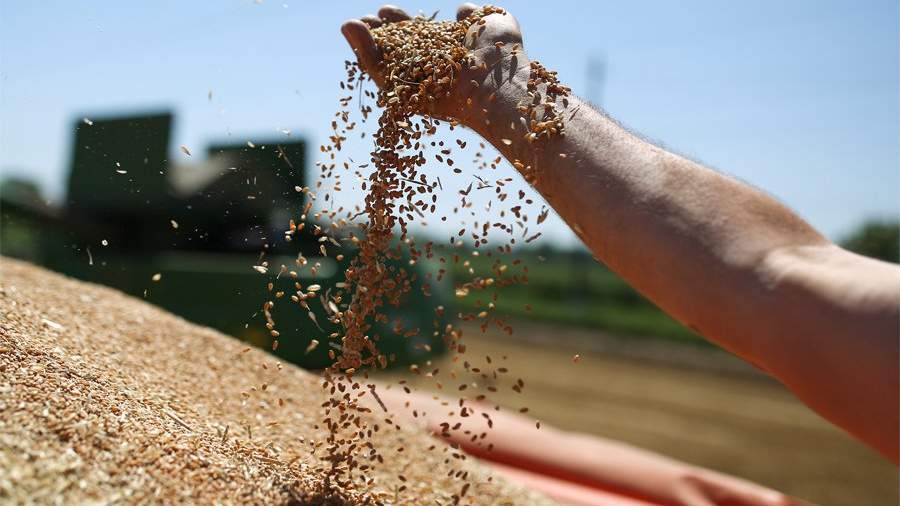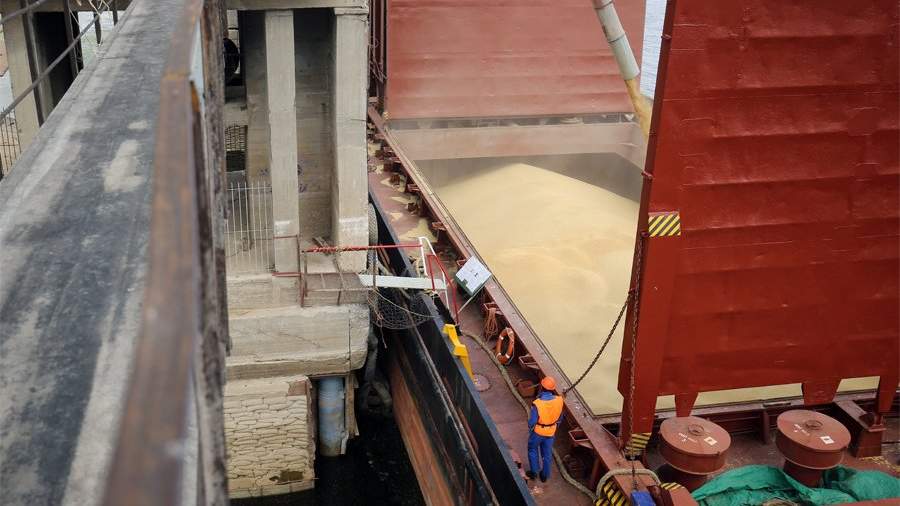Despite the coronavirus epidemic and countrywide restrictions, the agricultural industry is doing business as usual this year. Moreover, the results in the grain sector are likely to be better than last year (quite successful), and the harvest size will be the second in history after a record 2017. The potential negative consequences of large harvests – a decrease in world prices – can be stopped by not the best results in European countries, where weather conditions were not the most favorable. Details – in the material “Izvestia”.
As of August 24, Russia has harvested grain from about 57.5% of the sown area. The total volume of threshed grain amounted to 90.2 million tons, of which 67.3 million tons were wheat. For comparison, on the same dates last year, grain was harvested 26.6 million tons, of which wheat – 57 million tons. It should be noted that a year ago, by the last ten days of August, work was completed on a smaller area compared to the current indicators (by about 3 million hectares).
However, the main factor contributing to the more successful harvests this year was the marked increase in yields. At the end of last year, the grain yield in Russia amounted to 26.6 c / ha, while at the moment it is 32.9 c / ha. Yes, the harvest has not yet been completed, and the yield indicator is likely to drop, since the completion of work in Siberia, the Urals and the Non-Black Earth Region, where the corresponding indicators are noticeably lower, is ahead. Nevertheless, when compared with the same period last year, the increase in yield is almost 2 c / ha.
In the last decade, grain yields in Russia have grown steadily. At the end of the 2000s, it kept in the range of 18–20 c / ha, after which it went up sharply. In 2008, for the first time in history, it exceeded the mark of 20 c / ha, and after 2015 it never dropped below 25 c / ha. The record was set in 2017 (29.2 c / ha), and given the dynamics of the current agricultural season, it may be surpassed.
In southern Russia, work on most of the sown area has already ended. Among the individual regions, it is worth highlighting the Volgograd region, where 4.72 million tons of grain have already been threshed. This is already more than the final result in 2018–2019, and only 500 thousand tons less than the record-breaking 2017. However, taking into account the yield (27 kg / ha) and the remaining unharvested areas (200 thousand hectares), there is reason to believe that the record can still be set.
At the same time, the quality of the crop turned out to be one of the best in all recent years. More than 90% of the harvested grain came from the food group. With regard to wheat, this means that it turned out to be mainly of the first to fourth grade. Note that even the emergency situation in 19 districts of the region, introduced due to the death of part of the crops, did not prevent a good harvest.
In the neighboring Rostov region, the quality indicators were even higher. 95% of the harvested grain belongs to the food group, and about 35% of wheat of the third class was harvested. In general, the region harvested 11.7 million tons of grain, of which 10.4 million tons fell on wheat. Compared to last year, the growth was about 6%, and the yield increased by 1 centner / ha. The record figure of 2017, however, was not updated – then the farmers harvested 13.2 million tons of grain. Apparently, the highs of that year in most of the country will not be surpassed soon.
The Krasnodar Territory demonstrated rather modest performance. In the Kuban, 9.4 million tons of grain were harvested, which is worse than the indicators of 2018-2019 – however, they were the best in history. On the other hand, the average yield turned out to be high – about 40 c / ha, and for wheat – almost 50 c / ha.
Record harvests of this year were shown by Adygea (553 thousand tons) and, probably, the Tambov region. At the moment, the grain harvest has already exceeded 4 million tons, while work has been completed on 81% of the sown area. The absolute maximum, as in many other regions, was set in 2017, when 4.1 million tons of grain were harvested at the end of the year. It is possible that the record will be updated by the neighboring Penza region, where it is expected to harvest more than 3 million tons of grain crops.
An impressive result in terms of yield was demonstrated in the Belgorod region, where it amounted to 52.7 c / ha, which is 4 c / ha higher than last year. However, in terms of gross volume, harvests are inferior to last year’s figure by almost a million tons.
Although farmers in the central regions and Siberia still have to carry out the main work on harvesting, the forecasts of the final result for the year look more and more realistic – and are gradually shifting towards increase. For example, in early August, the SovEkon expert center predicted a total wheat harvest of 79-80 million tons, and now the estimate has grown to 81.2 million tons. As for grain harvests in general, according to the experts of the center, they can reach 128 million tons
The Institute for Agricultural Market Studies (IKAR) predicts that the wheat harvest this year will reach 82.5 million tons, while the total grain harvest will be 129 million tons. Rusagrotrans believes that the gross grain harvest will amount to 128.4 million tons, and 81.9 million tons of wheat will be harvested. All these indicators are united by the fact that they will be, by a good margin, the second result in the history of Russia.
The harvest campaign this year was successful enough to cushion the decline in GDP, although the share of the agro-industrial complex in the economy is not very large. In July, the country’s GDP fell by 4.7% against the same month of the previous year, while the decline in June was 6.4%. The growth of production in the agricultural sector amounted to 4% compared to July last year.
Practice has repeatedly shown that a good harvest can become a problem for producers and grain traders, as it negatively affects world prices. This year, negative forecasts for low grain yields in Russia have long supported high grain prices. Nevertheless, even now, when it became clear that the harvest would be at the level, prices did not fall too much. Food wheat in the port of Novorossiysk now costs in the range of $ 200-202 per ton.
The relatively high prices are explained by the weak preliminary results of the harvesting campaign in Europe. Thus, according to Bloomberg, the soft wheat crop in France will decline by a quarter to 29.5 million tons. The indicator will be one of the worst in the last twenty years. Weak results are also expected in Romania, and in Poland and Germany the figures will be on the average. In general, grain exports from the European Union are likely to fall by at least several million tons this year.
In the last agricultural year, wheat exports from Russia fell sharply, amounting to 37.5 million tons. This figure, although high against the background of, say, the results of five to six years ago (and generally one of the best in history), turned out to be discouraging after 54 million tons in the previous year. The current harvest allows us to hope that this year we will be able to win back some of these losses.


